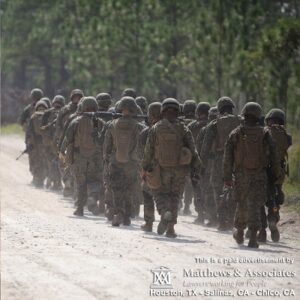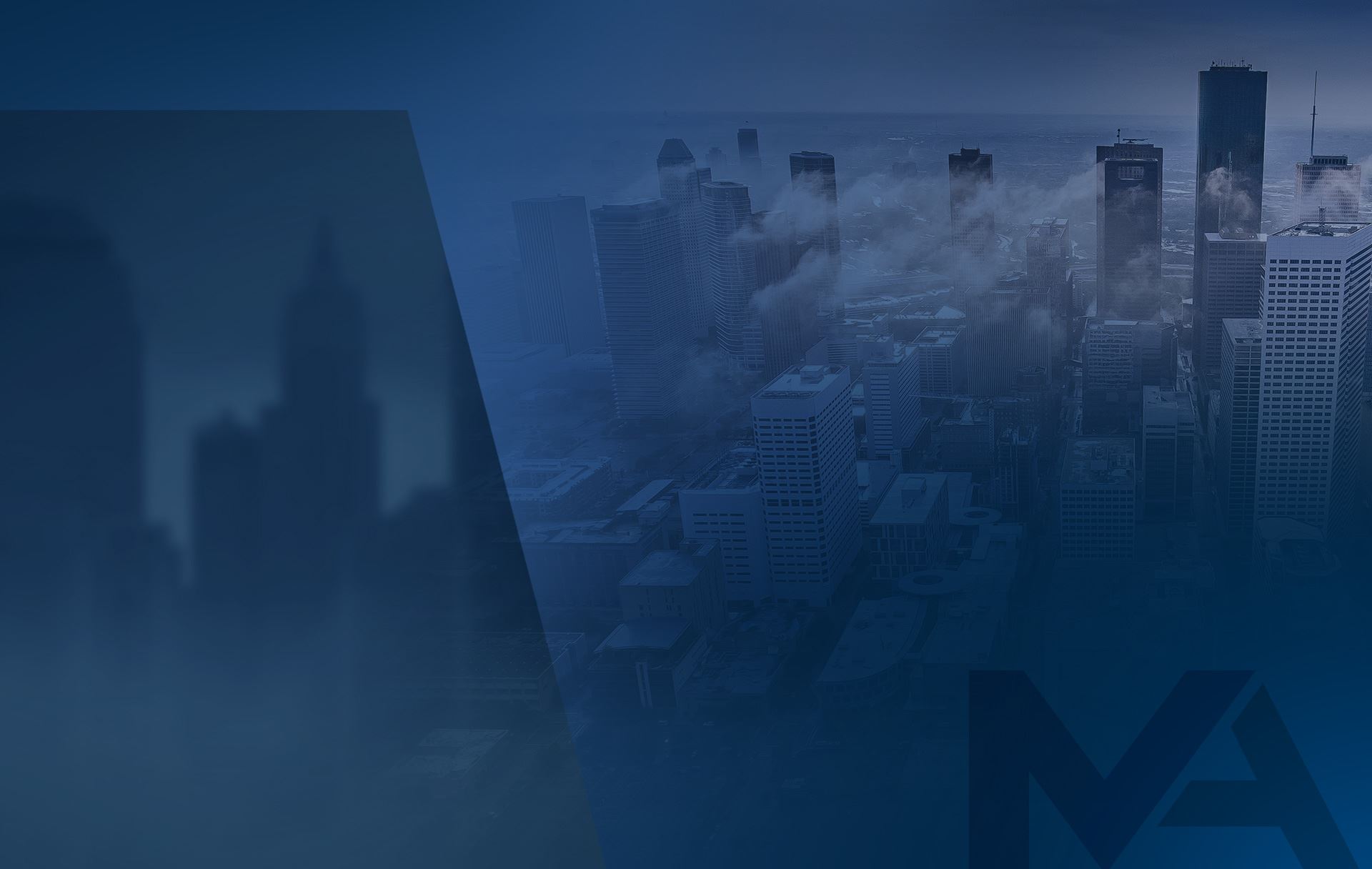 The Camp Lejeune Justice Act of 2022 opens the door for service members and their families to file lawsuits against the federal government over Camp Lejeune’s contaminated water. Service members and their families had not previously been able to secure proper compensation for their water contamination injuries. The Camp Lejeune Justice Act of 2022 helpfully transforms the legal terrain for victims and survivors.
The Camp Lejeune Justice Act of 2022 opens the door for service members and their families to file lawsuits against the federal government over Camp Lejeune’s contaminated water. Service members and their families had not previously been able to secure proper compensation for their water contamination injuries. The Camp Lejeune Justice Act of 2022 helpfully transforms the legal terrain for victims and survivors.Related: Camp Lejeune Water Contamination Attorneys
Anyone suffering from a health condition related to Camp Lejeune’s contaminated water might wish to know more about the Act and why the government passed it. A look at the Camp Lejeune water contamination timeline may give those who served at the camp, or who lived or worked there and were later diagnosed with cancer, a better understanding of what happened to them and why.
The Camp Lejeune Water Contamination Timeline
1941: Camp Lejeune is built in North Carolina’s southeastern Onslow County region.
1942: Camp Lejeune opens.
1952: Tarawa Terrace Water Treatment Plant begins operation. It’s one of two major water treatment facilities at Camp Lejeune that distributes contaminated water. It was supposed to provide clean water to the Tarawa Terrace residents, but was suspected of having the potential to become contaminated within a few years of opening.
1953: HadNot Point Water System is built to treat water for Hadnot Point residents. By the close of August 1953, the Hadnot Point water system is already contaminated by toxic chemicals. August 1, 1953 marks the opening eligibility period under the new Camp Lejeune Justice Act of 2022. Anyone who lived, worked, or was stationed at the camp since that date might be able to recover compensation.
1957: Water distributed through the Tarawa Terrace water system starts to become contaminated. The Agency for Toxic Substances and Disease Registry estimates that more than half of Tarawa Terrace’s water was contaminated by Nov. 1957.
1972: The Holcomb Boulevard water system opens. It served sections that included Paradise Point, Midway Park, and Berkeley Manor. People from those places had previously received water through the Hadnot Point system. Holcomb Boulevard’s system was generally considered safe, but the base’s infrastructure made it necessary to supplement Holcomb Boulevard water with (contaminated) Hadnot Point water. Those who lived in those areas may have been exposed to toxic chemicals.
1980-1982: Water quality tests required by the EPA for certain toxic chemicals in Camp Lejeune water found “[O]ther chemicals interfered with test results.” A 1982 investigation by the Marine Corps found trichloroethylene (TCE) and tetrachloroethylene (perchloroethylene or PCE) levels exceeding EPA standards for safe drinking water. Two of the eight water treatment facilities – Tarawa Terrace and Hadnot Point – were found to have these chemicals tainting their water.
1982-1984: The government learns through the U.S. Marine Corps that the water supply at Camp Lejeune is contaminated to some indeterminate degree. The Marines and U.S. Navy determine which sites are contaminated, then move to find out where the contamination occurred. The Navy is charged with identifying potential contamination sites and testing water at nearby wells for contamination.
1985-1987: The Agency for Toxic Substances and Disease Registry shows the federal government shut down Camp Lejeune’s most contaminated wells by 1985. But all the contaminants are not removed from the water until 1987. December 31, 1987 marks the end of the eligibility period.
Hence, people who lived, worked, or were stationed at Camp Lejeune from August 1, 1953, to December 31, 1987 may be eligible to file a lawsuit for their injuries.
1988: Camp Lejeune water reportedly becomes safe for drinking.
1987-1989: The standards for volatile organic compounds (VOCs) are added to standards established by The Safe Drinking Water Act. Though Congress passed the Safe Drinking Water Act in 1972, it did not include standards for how much TCE, vinyl chloride, and benzene should be present in Camp Lejeune. Those were all chemicals detected in the camp’s contaminated water. Regulations regarding these hazardous Camp Lejeune chemicals were not published in the Federal Register until 1987, a few years after the chemicals began contaminating the area.
1999: Seventeen years after Camp Lejeune’s water was first discovered to be contaminated by toxic chemicals, the Marine Corps begins notifying former camp residents and service members about the exposure. The U.S. government has still not presented a legitimate reason for this 17-year delay.
2009: The first Camp Lejeune cancer lawsuit is filed against the U.S. government over Camp Lejeune’s contaminated water. The wife of a former Marine files the case. Laura Jones lived at Camp Lejeune with her husband from 1980-1983 when contaminated water treatment plants supplied drinking water to their house.
The Camp Lejeune drinking water lawsuit Ms. Jones files claims she was exposed to dangerous chemicals through the water such as TCE, PCE, DCE, vinyl chloride, and benzene. She alleges that exposure to those chemicals caused her to suffer from non-Hodgkin’s lymphoma (NHL).
2012: “Honoring America’s Veterans and Caring for Camp Lejeune Families Act of 2012” is signed into law. This new law gives active duty service members of the United States Department of Veterans Affairs a chance to receive health benefits if they meet certain eligibility requirements, such as serving at Camp Lejeune. One of the Act’s provisions allows eligible family members of those serving at Camp Lejeune to be reimbursed for health care costs associated with qualifying conditions.
2017: Veterans begin to file VA benefit claims for contaminated water exposures and injuries. Camp Lejeune claimants are presumed to have service connection when filing for compensation, announces the Department of Veterans Affairs. An estimated $2.2 billion fund is established to cover the VA’s compensation claims over the next five years. The VA begins accepting compensation claims, but many vets who appear eligible for compensation are denied compensation by legal hurdles.
2021: Congress introduces the Camp Lejeune Justice Act for consideration. If passed, the law will close many loopholes that prevent many Camp Lejeune service members and their families from receiving financial compensation. Claims can be made for service members stationed on a base for at least 30 days between August 1, 1953, and December 31, 1987. Each service member bringing a case must also show a health injury condition has resulted from Camp Lejeune’s water.
2022: Congress passes the Camp Lejeune Justice Act of 2022 in March, after being presented with it on January 25, 2022. The US Senate then passes the bill (84-14), which is then signed into law by the U.S. President on August 11, 2022.
RELATED
- Camp Lejeune Justice Act H.R. 6482 (.pdf)
- Camp Lejeune Water Contamination Thryroid Cancer
- Camp Lejeune Water Contamination Survivors
- U.S. Senate Contact Information
- Sign up to receive email updates on this litigation
- Local Veterans hoping to Pass Honoring our Pact Act
- Free Legal Case Consultation

by Matthews & Associates




